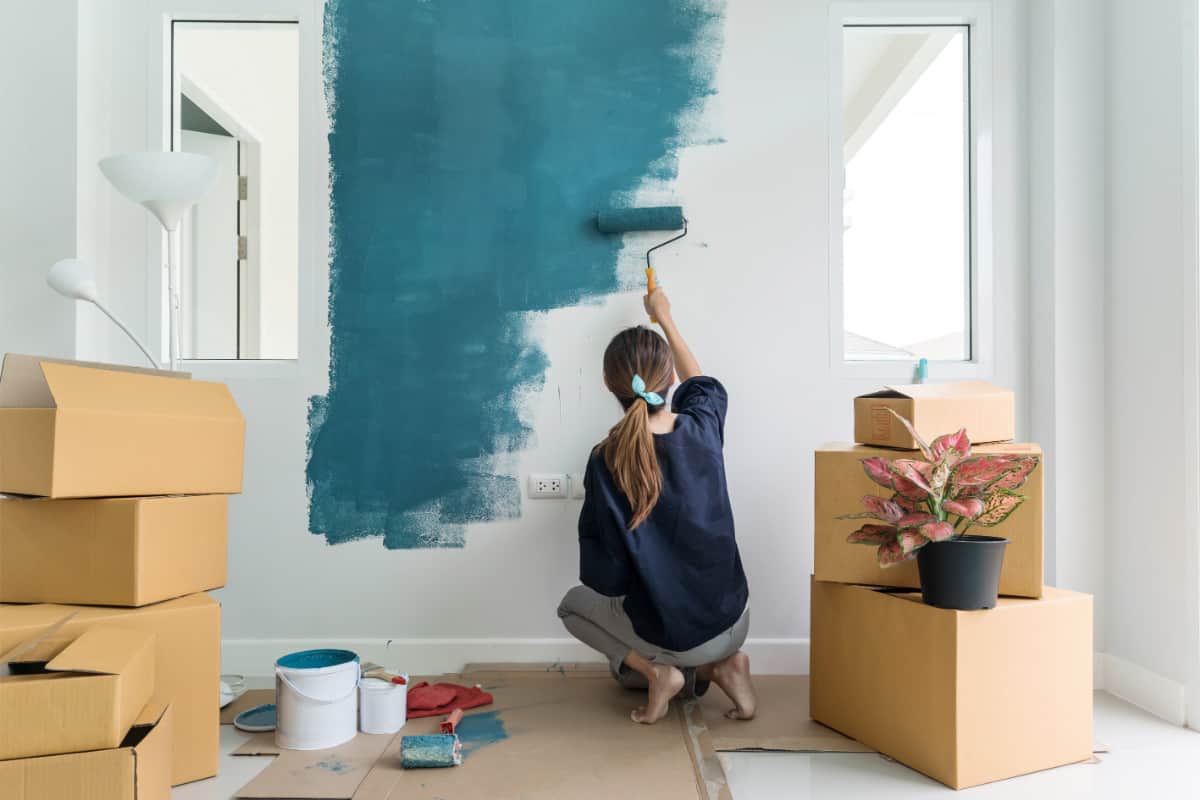
Certainly! Here are some home interior painting tips to help you achieve a successful and professional-looking result:
- Prepare the Room: Before you start painting, prepare the room by removing furniture, decorations, and fixtures. Cover the floors with drop cloths or plastic sheets to protect them from paint drips or spills. Use painter’s tape to protect trim, baseboards, and other areas you don’t want to paint.
- Clean and Repair Surfaces: Ensure that the surfaces you’re going to paint are clean and free of dust, dirt, and grease. Wipe them down with a mild detergent and warm water solution. Repair any holes, cracks, or imperfections using spackling paste or a suitable filler. Sand the patched areas until they are smooth.
- Prime the Walls (if needed): Primer helps paint adhere better and provides a uniform surface for the paint. If you’re painting over a dark color, a stained surface, or bare drywall, applying a coat of primer is recommended. Follow the manufacturer’s instructions for the primer and allow it to dry completely before painting.
- Choose the Right Paint and Tools: Select high-quality interior paint that suits the desired finish, color, and durability you want to achieve. Consider the type of surface you’re painting (e.g., flat walls, trim) and choose the appropriate paint finish (e.g., matte, eggshell, semi-gloss). Use quality brushes, rollers, and other tools for smooth and even application.
- Test Paint Colors: Before committing to a color, test it on a small section of the wall or on a sample board. Lighting and surrounding colors can greatly impact how a color looks in a space. Testing helps you ensure that the chosen color complements the room and meets your expectations.
- Use Proper Painting Techniques: Start by cutting in the edges of the walls with a brush or angled paintbrush. This involves painting along the ceiling, corners, and trim to create clean lines. Then, use a roller to cover the larger areas of the wall, working in sections. Apply paint with even and overlapping strokes, maintaining a wet edge to avoid visible lines.
- Paint in the Right Order: When painting multiple colors or areas, it’s generally recommended to start with the ceiling, then move to the walls, and finally paint the trim. This order helps prevent drips or splatters on already painted surfaces.
- Allow Proper Drying Time: Follow the paint manufacturer’s instructions for drying times between coats. It’s crucial to allow sufficient drying time to avoid smudging or damaging the freshly painted surface. Proper ventilation can also help facilitate the drying process.
- Apply Multiple Coats: In most cases, applying two or more coats of paint is necessary to achieve a solid and consistent finish. Allow each coat to dry completely before applying the next. Use the same techniques as mentioned earlier to maintain a smooth and even application.
- Clean Up and Maintain: Clean your brushes, rollers, and other painting tools with soap and water or according to the paint manufacturer’s instructions. Properly dispose of any leftover paint and materials according to local regulations. Keep touch-up paint for future needs and maintain the painted surfaces by cleaning them with a mild detergent and a soft cloth as needed.
By following these tips, you can ensure a successful and satisfying interior painting project that enhances the look and feel of your home. Happy painting!